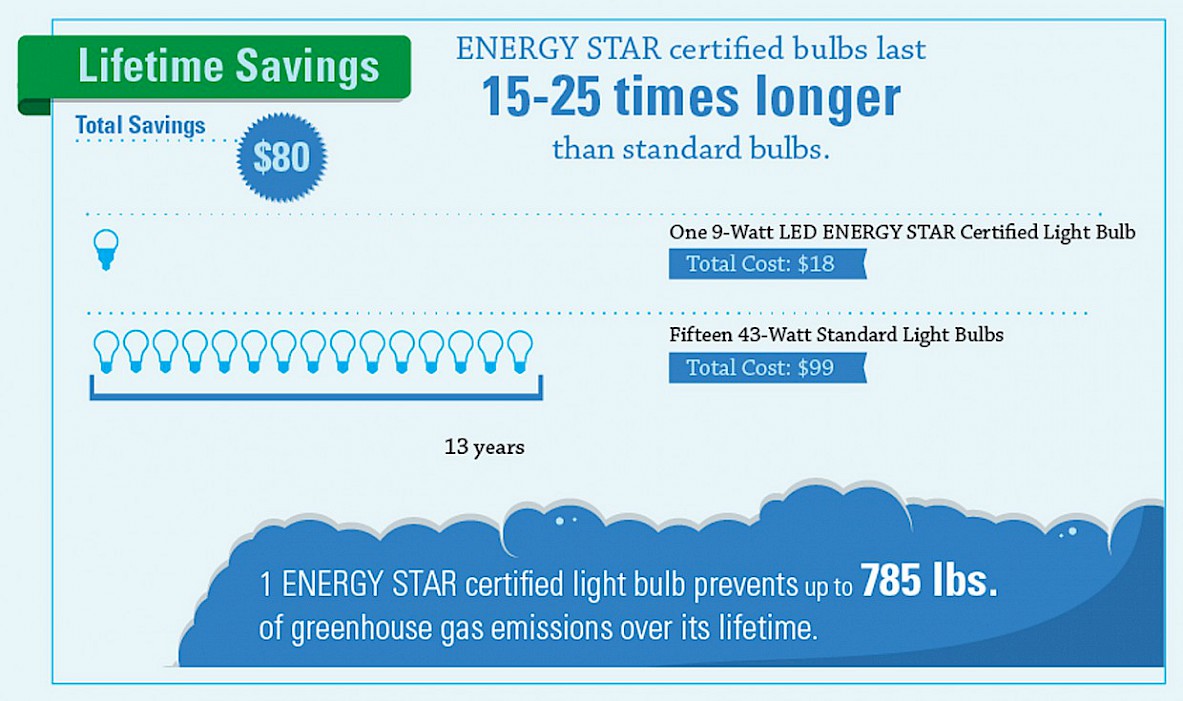Franklin Energy’s Product Division, AM Conservation, Agrees to Acquire Energy Federation, Inc.
Let There Be (LED) Light! A Lighting Guide
When it comes to light, there's a lot to wrap your head around: LED, lumens, watts, kelvin, warm vs. cool. Do you ever wonder what it all means and what it has to do with you? It can be daunting to know what the best light bulbs are for your home. Hopefully this blog will help you better understand the differences between an energy efficient LED bulb and a standard incandescent bulb picked up at the store for cheap.

Lumens vs. Watts ? Who Wins?
We're all accustomed to look at the wattage of a bulb to determine its brightness but we should actually be looking at the lumens of a bulb. Why? Well, it's simple: watts actually measure the amount of electricity a bulb requires to operate while lumens measure the actual brightness of the bulb!
Energy Star certified bulbs provide the same brightness (lumens) with less energy (watts), providing you the brightness you require but saving energy and costs on your utility bill.

Light & Color
Did you know that lightbulbs come in a wide range of colors? They sure do! It may be weird to think, but lights aren't all one color. There is a wide range of hues that support various activities in our everyday life. Light, color, or appearance matches a temperature on the Kelvin scale (K). Lower K means warmer, yellowish light, while higher K means cooler, bluer light. Below is a handy graphic that shows the range we can pick from:

These hues can actually impact our life, too! For example, if you want to be alert and actively working, a higher K (cooler light) will keep you on top of your game. If you're just waking up or relaxing in the evening before bed, a lower K (warmer light) will help ease you into the day or help your brain move to sleep mode.
Energy Star Savings & You
So what does all this mean for you? Lighting an average home can use more energy than your washing machine, refrigerator, and dishwasher combined. Using Energy Star certified light bulbs can save you about $80 in electricity costs over its lifetime (its lifetime, by the way, lasts 15-25 times longer than standard bulbs) while using up to 90% less energy than standard bulbs helping us protect the environment and prevent climate change.

If every household replaced just one light bulb with one that has earned the Energy Star, we would save enough energy to light 3.5 million homes for a year! That's not all! We'd also prevent greenhouse gas emissions equivalent of 640,000 vehicles.
Making the move to Energy Star is a no brainer when you can lower your carbon footprint AND your electricity bill!
To find out if you are eligible for discounts on Energy Star lightbulbs, find your utility provider on this list and start saving today.
Subscribe
Resources
Latest Updates
Customer Testimonials
Lets Talk!
Reach your customers & Exceed your goals
Contact EFI